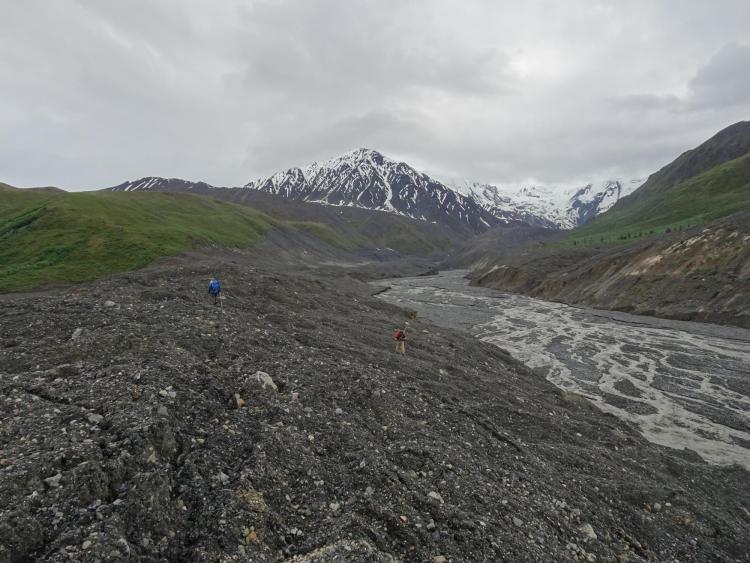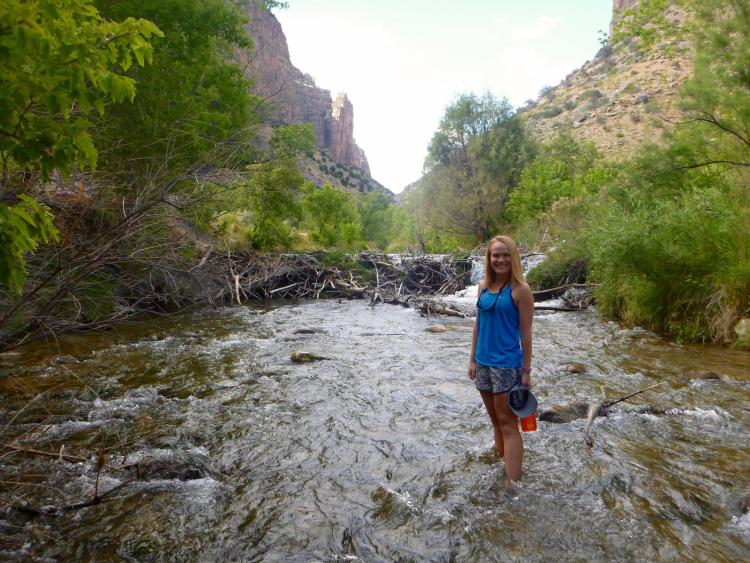CU Boulder’s geoscientists, ranked world’s best, showcase rock-it science
From glacial landslides to the secrets of beaver dams, world’s top geoscientists present latest science at international conference
If you take a stroll through the Benson Earth Sciences building on the University of Colorado Boulder campus, you will see a banner in the building’s foyer above the clock made of rock that reads “#1 in the World in Geosciences, U.S. News and World Report.”
This ranking was announced in November and followed four straight years of geoscience being ranked second in the world, reflecting the increased prevalence and impact of geoscience research into important topics like how global warming might be helping to trigger massive glacial landslides, what plant life on Earth might look like in 2100 if the planet continues to warm at its current rapid clip—and, how beavers might help save the world.
In December, a contingent of these CU Boulder rock stars travelled to Washington, D.C., to present their latest research at the annual meeting of the American Geophysical Union (AGU). With more than 20,000 people attending each year, the AGU annual meeting is the largest Earth science conference in the world.
The meeting was an eruption of new science, but, amid the mayhem, geographer and geology PhD student Mylène Jacquemart gave a presentation in a session that she says felt like a “funeral.” That’s because her presentation was about glaciers, which are disappearing more rapidly and frequently across the world.
Sometimes, Jacquemart explains, these glaciers can collapse and race downhill as a mélange of rock and ice—something that can be a problem if there are people living downhill of the glacier. “I’m really interested in how hazards in cold regions of the world are changing as the world warms,” she says.
In July 2018, Jacquemart and her grad-student colleague Jasmine Hansen took a helicopter into the wilds of Alaska, where in 2013 and again in 2015, the collapse of a glacier in Wrangell-St. Elias National Park and Preserve sent millions of cubic feet of ice hurtling downhill at over 100 mph.
One of the things Jacquemart thinks helped trigger the slides was higher summer temperatures that cause more snow and ice to melt—but why that may be happening is still a mystery. To crack this cold case, Jacquemart plans to revisit her field side in Alaska again this summer to search for more clues.

Mylène Jacquemart’s field team treks over the debris left behind by a glacier that hurtled down this slope in Wrangell-St. Elias National Park and Preserve in Alaska. Photo by Mylène Jacquemart. At the top of the page, Greg de Wet and Sarah Crump sail their inflated raft over an arctic lake on Baffin Island. Photo by Zach Montes, Orijin Media.
Elsewhere on our melting planet, in the spring of 2017, CU Boulder paleoclimatologists Sarah Crump and Greg de Wet sailed a makeshift inflatable raft onto a lake on Baffin Island in the Canadian Arctic. Ice in the Arctic and on Baffin Island is in the same funeral procession as Jacquemart’s glaciers; by 2100, the planet will be so hot that there could be no Arctic sea ice at all if warming continues unabated, some studies suggest.
To help forecast how Arctic plant life might or might not cope with such change, de Wet and Crump retrieved samples of sediment from the lake bottom that deposited thousands of years ago when the planet warmed in a similar fashion to today.
They extracted DNA from the sediment, and with that DNA they hope to one day find out what kinds of plants existed back when summers were warmer in the Arctic. Peering into the past in this way could help paint a picture of what plant life in the region might look by the end of this century—now the team just needs to analyze the DNA samples from Baffin Island, explains Gifford Miller, a paleoclimatologist and the lead scientist behind the research.
“We have the canvas, and we have our pallet of paint, and brushes are actively dipping into the paint, but they haven’t yet painted the picture,” he says.

Emily Fairfax stands downstream of a beaver dam in western Colorado. Photo by Andrew Peterson.
As Earth’s ice gets read its last rites, an unexpected hero might make brighter headlines: beavers. Emily Fairfax, an ecohydrologist who will soon finish her PhD research, studies beavers in the American West. These animals, she explains, can have a huge impact on the amount of water that is available in a given ecosystem.
Beavers in America nearly went extinct in the 20th century due to over-hunting, but have since rebounded. In some places, beavers might be an asset when it comes to ameliorating drought-stricken regions like those in California, because the dams beavers build can help bring water to places where before there was little to none.
“I think that beaver damming can help solve a lot of these problems,” Fairfax says.
At AGU, Fairfax pointed out that not all beaver dams are made equal—some hold water quite well while others can be quite leaky.
“Imagine you’re a land manager going out on your land trying to figure out what a beaver dam is doing to the landscape. That is a surprisingly tricky task—beaver dams come in a variety of shapes, sizes, and states and their impacts are just as varied.”
What she found is that the degree to which a beaver dam is leaky has a big impact on how much the presence of a beaver dam can transform the landscape by, for instance, controlling the availability of groundwater for plants and other life in the area. “You can’t just assume they stop all water,” she says.

